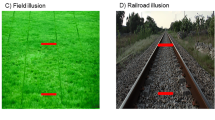Abstract
This paper proposes that virtue theories of argumentation and theories of visual argumentation can be of mutual assistance. An argument that adoption of a virtue approach provides a basis for rejecting the normative independence of visual argumentation is presented and its premisses analysed. This entails an independently valuable clarification of the contrasting normative presuppositions of the various virtue theories of argumentation. A range of different kinds of visual argument are examined, and it is argued that they may all be successfully evaluated within a virtue framework, without invoking any novel virtues.




Similar content being viewed by others
Notes
Godden tracks down examples of each, although he finds it much easier to identify normative non-revisionists (who reject IndVis) than normative revisionists (who accept IndVis) (Godden 2017, §3). He notes that Leo Groarke and J. Anthony Blair have each asserted the continuity of evaluative methods for visual and verbal arguments, making them non-revisionists (Blair 1996; Groarke 1996). In general, it seems that IndVis is more frequently attributed to others than it is personally embraced. Johnson, who seems first to have formulated IndVis, did so to reconstruct a view he did not himself endorse (Godden 2017, 10). Blair reads Groarke’s early non-revisionism as a tactical gambit intended to head off the charge that visual arguments are not arguments, and suggests that Groarke might now accept IndVis (Blair 2015, 219). Godden also proposes Michael Gilbert as someone to whom IndVis might be congenial, even if he has never explicitly endorsed it. However, this may turn on Gilbert’s use of ‘multimodal’ which, as Blair observes, is quite different from the use the term has in the context of visual argument (Blair 2015, 218). Elsewhere, Amy Anderson observes an implicit revisionism amongst advocates of ‘multiliteracies’, such as Gunther Kress, who regard texts and images as requiring different sorts of literacy (Anderson 2015, 110). Although such projects may be primarily descriptive rather than normative, any evaluation based therein would seem committed to IndVis.
A similar argument is distributed over several pages in (Godden 2017). I quote the earlier, more compact version here for convenience. I note the (minor) revisions to wording below.
In Godden’s later article, P2 appears in slightly different form as ‘Rational appraisal of argument: The evaluation of argument involves assessing the probative or rational support claims are provided with by reasons’ (Godden 2017, 7). However, this version still exhibits the same ambiguity.
For a critique, see (Dove 2014, 2 f.).
Godden revises P3 somewhat more extensively than the other premisses; it appears in his later article as ‘Trans-modal evaluative equivalence (EE): The same content-defined argument, no matter how it is presented, should receive the same rational or probative evaluation, ceteris paribus’ (Godden 2017, 13). He also acknowledges that EE is stronger than needed, observing that its contradictory is consistent with normative non-revisionism (Godden 2017, 14).
Hence my revision of Godden’s argument is unlikely to be acceptable to Godden himself, since he explicitly rejects immodest virtue argumentation theory (Godden 2016, 355).
This statement of TMV is restricted to two modes, the verbal and the visual. An unrestricted version of TMV seems plausible, but I shall not attempt to defend it here.
I am grateful to an anonymous referee for this journal for stressing this point.
The distinction has been discussed extensively in aesthetics (see, for example, Kulvicki 2006). It has attracted much less attention in visual argumentation, perhaps surprisingly. Indeed, in the context of multimodal argumentation, one could make a case that diagrams and pictures should be understood as distinct modes.
Specifically, a failure of intellectual empathy (Aberdein 2016, 415).
For an analysis of narrative argument in virtue terms, see (Al Tamimi 2016).
These vices may be seen as subtypes of unwillingness to listen to others and undue willingness to modify one’s own position, respectively (Aberdein 2016, 416).
References
Aberdein, A. 2010. Virtue in argument. Argumentation 24 (2): 165–179.
Aberdein, A. 2016. The vices of argument. Topoi 35 (2): 413–422.
Aberdein, A., and D.H. Cohen. 2016. Introduction: virtues and arguments. Topoi 35 (2): 339–343.
Al Tamimi, K. 2016. Evaluating narrative arguments. In Argumentation, Objectivity and Bias: Proceedings of the 11th International Conference of the Ontario Society for the Study of Argumentation (OSSA), May 18–21, 2016, ed. P. Bondy, and L. Benacquista. Windsor, ON: OSSA.
Anderson, A.K. 2015. Dissociation and visual arguments: Creating customers for Levy’s real Jewish rye. Argumentation and Advocacy 52 (2): 109–124.
Battaly, H. 2008. Virtue epistemology. Philosophy Compass 3 (4): 639–663.
Bell, S., and E. Valley. 2013. Drawing truth to power: A conversation about cartoons. Jewish Quarterly 60 (1): 28–33.
Birdsell, D., and L. Groarke. 1996. Toward a theory of visual argument. Argumentation and Advocacy 33 (1): 1–10.
Birdsell, D., and L. Groarke. 2007. Outlines of a theory of visual argument. Argumentation and Advocacy 43 (3–4): 103–113.
Blair, J.A. 1996. The possibility and actuality of visual arguments. Argumentation and Advocacy 33 (1): 23–39.
Blair, J.A. 2015. Probative norms for multimodal visual arguments. Argumentation 29 (2): 217–233.
Bowell, T., and J. Kingsbury. 2013. Virtue and argument: Taking character into account. Informal Logic 33 (1): 22–32.
Cohen, D.H. 2005. Arguments that backfire. In The uses of argument, ed. D. Hitchcock, and D. Farr, 58–65. Hamilton, ON: OSSA.
Cohen, D.H. 2009. Keeping an open mind and having a sense of proportion as virtues in argumentation. Cogency 1 (2): 49–64.
Cohen, D.H. 2013. Virtue, in context. Informal Logic 33 (4): 471–485.
Davison, W.P. 1983. The third-person effect in communication. The Public Opinion Quarterly 47 (1): 1–15.
Dove, I.J. 2014. Commentary on: David Godden’s “On the norms of visual argument”. In Virtues of Argumentation: Proceedings of the 10th International Conference of the Ontario Society for the Study of Argumentation (OSSA), May 22–25, 2013, ed. D. Mohammed, and M. Lewiński. Windsor, ON: OSSA.
Geddo, C. 2009. Il “pastello” ritrovato: Un nuovo ritratto di Leonardo? Artes 14: 63–87.
Geddo, C. 2013. Leonardo da Vinci: The extraordinary discovery of the lost portrait. The rationale for authentication. Geneva: Cercle Menus Plaisirs.
Godden, D. 2014. On the norms of visual argument. In Virtues of Argumentation: Proceedings of the 10th International Conference of the Ontario Society for the Study of Argumentation (OSSA), May 22–25, 2013, ed. D. Mohammed, and M. Lewiński. Windsor, ON: OSSA.
Godden, D. 2016. On the priority of agent-based argumentative norms. Topoi 35 (2): 345–357.
Godden, D. 2017. On the norms of visual argument: A case for normative non-revisionism. Argumentation. doi:10.1007/s10503-016-9411-9.
Goddu, G. C. 2015. Towards a foundation for argumentation theory. In Proceedings of ISSA 2014: Eighth Conference of the International Society for the Study of Argumentation ed. B.J. Garssen, D. Godden, G. Mitchell, and A.F. Snoeck Henkemans 475–482. Amsterdam: Sic Sat.
Goodman, N. 1976. Languages of art. Indianapolis, IN: Hackett.
Greco, J. 1993. Virtues and vices of virtue epistemology. Canadian Journal of Philosophy 23 (3): 413–432.
Groarke, L. 1996. Logic, art and argument. Informal Logic 18 (2–3): 105–131.
Groarke, L. 2015. Going multimodal: What is a mode of arguing and why does it matter? Argumentation 29 (2): 133–155.
Groarke, L., C.H. Palczewski, and D. Godden. 2016. Navigating the visual turn in argument. Argumentation and Advocacy 52 (4): 217–235.
Hamby, B. 2015. Willingness to inquire: The cardinal critical thinking virtue. In Palgrave handbook of critical thinking in higher education, ed. M. Davies, and R. Barnett, 77–87. London: Palgrave.
Johnson, R.H., and J.A. Blair. 2006. Logical self-defense. New York, NY: International Debate Education Association.
Kjeldsen, J.E. 2015. The study of visual and multimodal argumentation. Argumentation 29 (2): 115–132.
Kjeldsen, J.E. 2016. Symbolic condensation and thick representation in visual and multimodal communication. Argumentation and Advocacy 52 (4): 265–280.
Kulvicki, J. 2006. On images: Their structure and content. Oxford: Clarendon.
Lepock, C. 2011. Unifying the intellectual virtues. Philosophy and Phenomenological Research 83 (1): 106–128.
López, I.H. 2013. Dog whistle politics: How coded racial appeals have reinvented racism and wrecked the middle class. New York, NY: Oxford University Press.
Mohammed, D., and Lewiński, M., ed. 2014. Virtues of Argumentation: Proceedings of the 10th International Conference of the Ontario Society for the Study of Argumentation (OSSA), May 22–25, 2013. Windsor, ON: OSSA.
Montmarquet, J. 1992. Epistemic virtue and doxastic responsibility. American Philosophical Quarterly 29 (4): 331–341.
Oestermeier, U., and F.W. Hesse. 2000. Verbal and visual causal arguments. Cognition 75: 65–104.
Paglieri, F. 2015. Bogency and goodacies: On argument quality in virtue argumentation theory. Informal Logic 35 (1): 65–87.
Robison, W., R. Boisjoly, D. Hoeker, and S. Young. 2002. Representation and misrepresentation: Tufte and the Morton Thiokol engineers on the Challenger. Science and Engineering Ethics 8 (1): 59–81.
Simard Smith, P., and A. Moldovan. 2011. Arguments as abstract objects. Informal Logic 31 (3): 230–261.
Sosa, E. 1985. Knowledge and intellectual virtue. The Monist 68 (2): 226–245.
Stevens, K. 2016. The virtuous arguer: One person, four roles. Topoi 35 (2): 375–383.
Tufte, E.R. 1997. Visual explanations: Images and quantities, evidence and narrative. Cheshire, CT: Graphics Press.
Wallis, D. ed. 2007. Killed cartoons: Casualties from the war on free expression. New York, NY: W. W. Norton.
Walton, D.N. 2013. An argumentation model of forensic evidence in fine art attribution. AI & Society 28 (4): 509–530.
Young and Rubicam, Inc. 1942. How to make posters that will help win the war. Technical report, National Advisory Council on Government Posters, Graphics Division, Office of Facts and Figures, Washington, DC.
Zagzebski, L. 1996. Virtues of the mind. Cambridge: Cambridge University Press.
Author information
Authors and Affiliations
Corresponding author
Rights and permissions
About this article
Cite this article
Aberdein, A. Virtuous Norms for Visual Arguers. Argumentation 32, 1–23 (2018). https://doi.org/10.1007/s10503-017-9424-z
Published:
Issue Date:
DOI: https://doi.org/10.1007/s10503-017-9424-z




